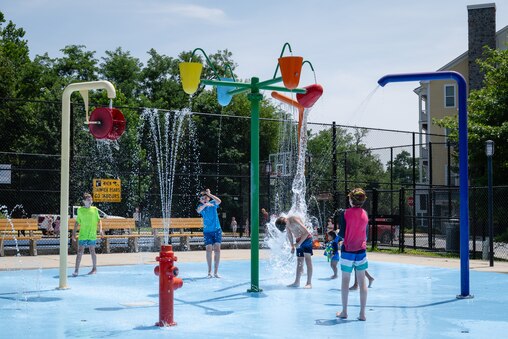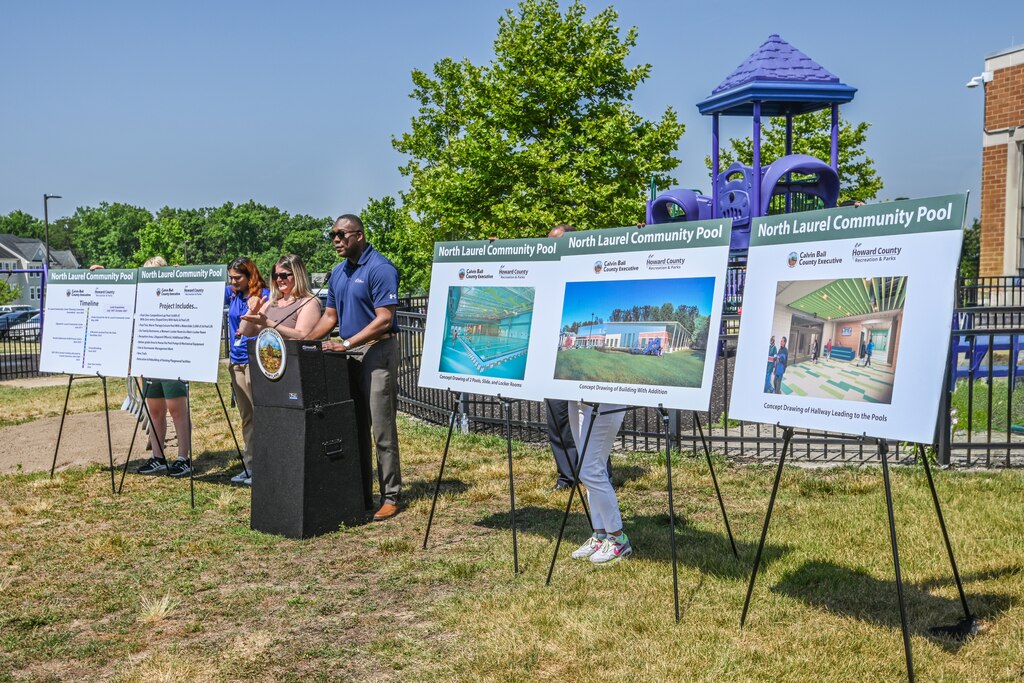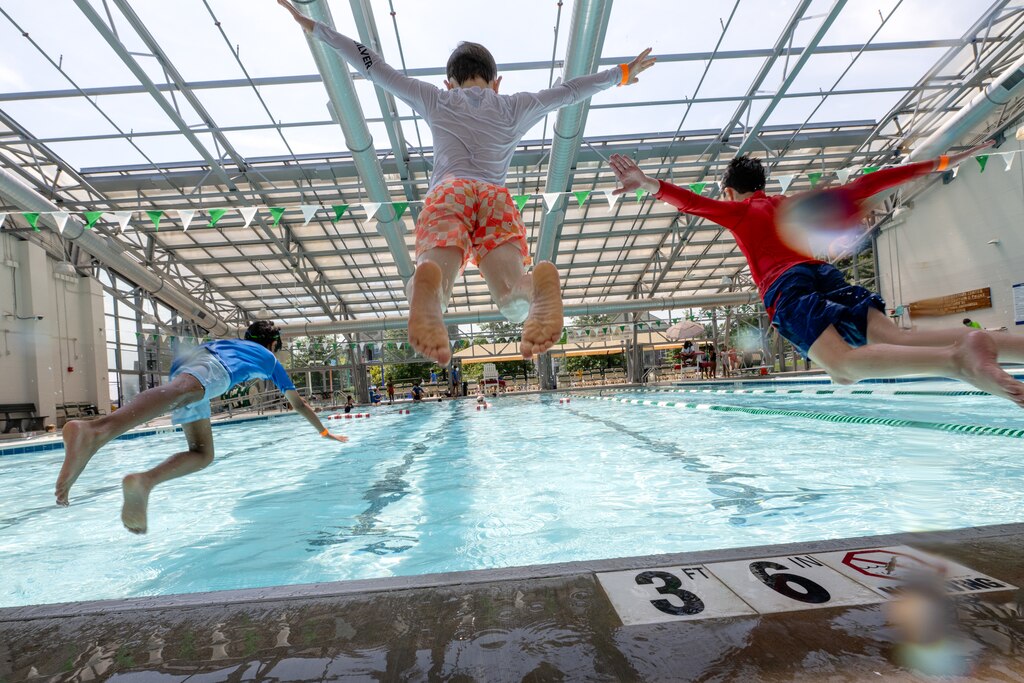Columbia’s first village pool wowed in 1968. So did its price tag.
When a Virginia college director asked what the Wilde Lake pool cost to build and operate, a Rouse Company executive replied that he couldn’t share the numbers in good faith.
“It is, frankly, still giving us so much more in the way of headache than satisfaction,” he wrote.
Swimming access was central to Columbia’s planned design at a time when efforts to desegregate many Maryland pools sometimes resulted in racial violence. Some Black Howard County residents traveled to Frederick to learn to swim, barred from private pools closer to home “for whites only.”
Developer James Rouse’s 1964 proposal promised a different kind of city with Columbia: racially integrated, rich in recreation and self-sustaining through membership fees, not government funding.
But financing these pools proved pricey. Records show the first pool in Wilde Lake cost 24% more than the $375,000 the Rouse Company had budgeted. Daily admission fees for adult residents and nonresidents ranged from $1 to $1.75, that’s $9.38 to $16.41 when adjusted for inflation.

These days, the Columbia Association is one of Howard County’s largest providers of recreation, offering an oasis dense with 27 indoor and outdoor swimming pools. Nearly 40% of association memberships, which offer access to a variety of facilities including pools, are held by people living outside of Columbia.
Anyone can purchase a membership, just as Rouse promised, but, compared to Baltimore City’s free public pools, the cost could seem high. Columbia charges up to $19 per day for residents and $34 for nonresidents.
Efforts to eliminate Columbia’s fees never gained traction, primarily because they’re essential for upkeep. Meanwhile, plans to develop public pools elsewhere in Howard County have moved at a glacial pace.
The result is lopsided access to swimming across one of Maryland’s wealthiest counties. Of all Howard County’s public amenities, swimming pools and splash pads are the least accessible to residents, according to a 2022 county analysis of parks and recreational offerings.
Howard County currently has only one public pool, at the Roger Carter Community Center, near the municipal center in Ellicott City.


The county plans to open two more in January inside the North Laurel Community Center. The $21 million project adds a competition lap pool and a warm-water leisure pool with a waterslide.
Howard County’s other roughly 230 pools are private or semi-public such as those at hotels, campgrounds, health clubs and apartment complexes.
Some pool users have turned to websites like Swimply to rent backyard pools around Howard County, an unsanctioned practice that’s created problems for some neighborhoods.
Several community advocates see the imbalanced access as evidence that the county has dropped the ball on public pools and “let Columbia bear the burden.”
“The county has shirked their responsibility,” said Lena Kennedy, a member of the Columbia Association Board’s aquatics advisory committee.
Before joining the committee, Kennedy often took her children to the community pools in Columbia. Still, she didn’t understand how expensive they are to maintain until she got directly involved.
Columbia has spent about $7.5 million on its 23 outdoor pools in the 2025 fiscal year. The association operates them at a loss to provide the maximum value to residents and guests, Dan Burns, vice president of community programs and services, said in a statement.
Including non-cash charges, association financial statements show a $4.8 million loss for aquatics in 2025.
In a statement Howard County Executive Calvin Ball said county officials are looking into future pool locations.
“Major infrastructure projects take money, time, careful planning, and community support,” Ball said.

This spring, federal and state budget cuts hampered Howard County’s annual budget negotiations. The area is home to about 50,000 federal workers, many feeling the squeeze as President Donald Trump shrinks the civil service.
Ball emphasized that his administration has prioritized completion of the North Laurel pool.
Still, it took Howard County advocates nearly 40 years to get a new pool built in North Laurel.
“I’ve lost numerous friends who were involved in the early days, who indeed did not get to see the pool built in their time,” said advocate Susan Garber.
County officials first promised to build an indoor pool at the North Laurel Community Center back in 2007, but county resources were diverted after the 2008 market crash and subsequent recession, and later by the Ellicott City flood response.
“Obviously, a pool for enjoyment, versus trying to save Ellicott City from future floods, helping them rebuild ... it was a no-brainer that it was going to be axed,” Garber said.
Without a pool in Laurel, Garber is stuck. She has severe osteoporosis and limited mobility, and her husband uses a wheelchair. Private pool rates were too expensive for the Savage resident, and the nearest public option required a bus ride and transfer at the Columbia mall.
Doing so in a wet bathing suit? Forget it.
County Councilwoman Christiana Rigby said public pools are “a piece of community infrastructure we often don’t think about.”
Rigby, who represents North Laurel, said the biggest limitation for county pools is staffing. Lifeguards and swim instructors are in short supply almost everywhere.
As Columbia absorbs demand from nonresidents, conflicting priorities have emerged. Residents are aging and have more need for senior-friendly programming, limiting offerings for families and children, Kennedy said.
She remembers taking her own children to the pool at Steven’s Forest — 200 swimmers of all ages crowded into one side of the pool while a handful of adults swam laps on the other.

Kennedy worries about accessibility, too, particularly for young children, whom she believes society has duty to teach to swim.
In 2001, the association launched a program for low-income Columbia students to earn a free membership for themselves and their families through school by doing well on assignments, improving their grades or having good attendance. The program is offered at 21 Columbia-area schools. Over the years, 8,000 students have earned memberships, including 667 last academic year.
Kennedy called it the “best-kept secret in Howard County.”
Residents coming to the county’s lone public pool range from infancy through their golden years, said Julija Sajuskas, manager at the Roger Carter Community Center.
Aquatic programs include swim lessons for all ages, women’s-only lessons, a swim team, baby water play and adaptive swim classes for people with disabilities or special needs.
Parents who participated in swimming lessons at the old Roger Carter pool now bring their children for swim class, Sajuskas said.
To Kennedy, Howard County’s lack of pools has effectively created a divide and equity issue.
Swimming access, she said, is “our responsibility as a society.”


Comments
Welcome to The Banner's subscriber-only commenting community. Please review our community guidelines.